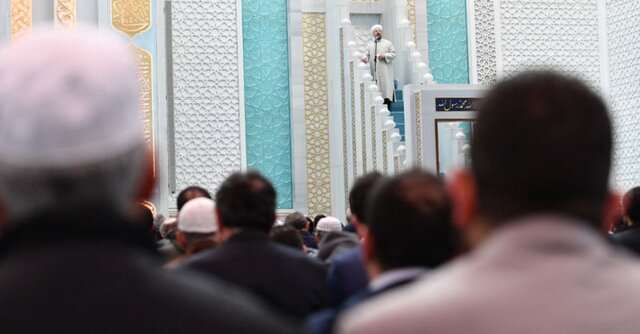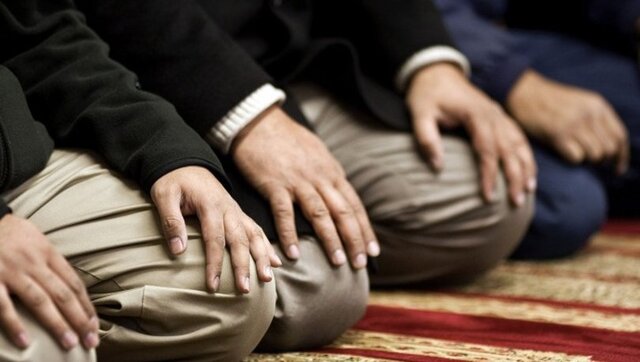When is the first tarawih in Ramadan?

The wait for the 'sultan of eleven months' Ramadan has begun. Tarawih prayers are performed in congregation in the mosque every night during the month of Ramadan. With only a short time left until Ramadan, the date and time when the first tarawih prayer will be performed has taken its place on the agenda. Tarawih prayer times have been determined in 81 provinces with the 2025 Ramadan Imsakiye calendar published by the Directorate of Religious Affairs. So, "When and at what time will the first tarawih prayer of Ramadan be performed?" Here are the 2025 iftar times...

WHEN IS THE FIRST TARAWHIH?
The first tarawih prayer of Ramadan 2025 can be performed in mosques and homes following the night prayer on Friday, February 28. In addition, the first sahur will be performed on this night.
Friday, February 28 Istanbul Night Time: 20:19
Friday, February 28, Ankara Night Time: 20:03
Friday, February 28 Izmir Night Time: 20:26

HOW MANY RAKATS ARE THERE IN TERAWEIH PRAYER AND HOW IS IT PERFORMED?
Tarawih prayer is a sunnah of 20 rakats specific to the month of Ramadan. It is sunnah to perform this prayer in congregation. Therefore, those who do not perform tarawih prayer in congregation and perform it alone at home are abandoning the sunnah and making a mistake. Tarawih prayer is a sunnah of Ramadan, not of fasting. For this reason, it is sunnah to perform tarawih for the sick and travelers who do not fast.

Here is how it is done;
Tarawih prayer is performed as 20 rakats. When Hz. Muhammad performed tarawih in congregation, he performed it as 8 rakats, and the Companions completed this prayer in their homes to 20 rakats. The beginning of performing all 20 rakats in the mosque dates back to the time of Hz. Omar. Since then, it has been performed as 20 rakats in mosques.
* The most virtuous way of performing tarawih is to perform it in two rakats with 10 salutations. The most common way of performing it is to perform it by giving salutations after every 4 rakats. It can also be performed by giving salutations after every 6 rakats.
It is also possible to perform 20 rakats of tarawih by sitting every other rakat and saying a single salam. However, since it is disliked to perform more than 8 rakats of night prayers with a single salam, tarawih should not be performed in this manner.
No matter how many times the tarawih prayer is performed, it must be performed sitting for every two rakats.

If one does not sit after two rakats and instead sits after every four rakats, those four rakats are counted as two rakats. Even if the salam is not given, one must definitely sit at the end of every two rakats.
* The word tarawih means relaxing. For this reason, after the salam at the beginning of the 4 rakats, one should sit down and relax for a while. During this time, anyone who wishes can read something to themselves. Or meditate. Or say tasbih. In these, the person performing the prayer has the choice. In our country, the muezzins usually recite salawat and perform jahrī dhikr out loud with the participation of the congregation.
* If the tarawih prayer is performed in fours, the salawat are also recited after the Tahiyyat in the first sitting. This is sunnah-i muakkadah. In fact, it is fard according to some mujtahids. Even if the congregation gets tired, the imam cannot leave them out. Also, at the beginning of the 3rd rakat, Subhanaka is recited before the Fatiha.
* Performing tarawih with a hatim is also sunnah. The sunnah of performing it with a hatim cannot be abandoned because it is difficult for the congregation. This sunnah must be performed in a mosque in a town.
* A person who performs the fard of the night prayer alone can perform the tarawih in congregation. However, it is not permissible to perform the tarawih in congregation without performing the fard of the night prayer in congregation.

* It is disliked for the imam to perform the recitation and the ruqons quickly in order to please the congregation. An imam who feels responsible avoids making the recitation incomprehensible, abandoning the ta'dil-i erkan, and making the number of tasbihs less than three in order to speed up the prayer.
* The imam who leads the prayer with a hatim must complete the hatim on the 27th night of Ramadan. If the prayer is not performed with a hatim, reading the part below the Fil Sura is more virtuous than reading a single Sura and mixed verses. In this way, the number of rakats can be known more easily.
* Although it is permissible to perform tarawih sitting without an excuse, it reduces its virtue and reward.
The imam can pray tarawih sitting down, whether he has an excuse or not. The congregation prays standing up. However, it is recommended for the congregation to pray sitting down to avoid separation.
* It is permissible to perform tarawih and witr prayers with different imams.
* It is makruh to perform tarawih prayer when one is deeply sleepy.
* It is also recommended to sit for a while between the witr and tarawih prayers.
* A person who performs tarawih prayer in congregation can perform the witr prayer alone, just as he can perform it in congregation.
* It is not necessary to make the intention for tarawih prayer in both rakats of tarawih prayer. Because tarawih prayer consisting of 20 rakats is considered as a single prayer. Therefore, the intention made when starting the prayer is sufficient.
Habertürk


